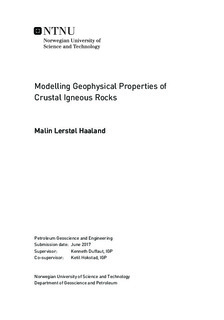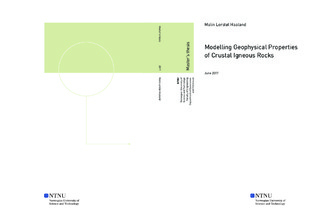| dc.description.abstract | The chemical composition of crustal igneous rocks strongly affects their geophysical properties. In order to model these effects, a classification scheme based on silica content was applied, resulting in the classes felsic, intermediate, mafic and ultramafic. Considering an isotropic linear elastic medium with a particular mineral composition corresponding to a given silica content, upper and lower Hashin-Shtrikman bounds for the elastic moduli and their corresponding compressional and shear wave velocities were estimated as a function of silica content and porosity. These theoretical bounds were compared to rock sample measurements, showing that the bounds represent a good approximation of the individual textural variations. Both elastic moduli, seismic velocities and densities show an increasing trend with decreasing silica content. The self-consistent approximation was applied to model how the elastic properties varies with different pore geometries. Variations in thermal and electrical conductivity as a function of silica content were modelled, which showed quite different trends than for the elastic properties, and in fact seems to be partly opposite correlated.
The Zoeppritz equations were applied in order to model the plane wave reflectivity of theoretical interfaces between an igneous basement overlain by a sedimentary half-space. Results of this shows that the reflectivity generally is stronger for underlying oceanic crust with low silica content (corresponding to the mafic classification) than for continental crust with higher silica content (corresponding to the felsic classification). However, the overlying sedimentary layer plays an important role in controlling the response, as well as other factors. AVA-analysis also indicates why it sometimes can be difficult to identify the basement reflector, especially when interpreting the continental crust. Based on the observations from the reflectivity analysis, the Continental Oceanic Boundary (COB) was attempted interpreted on a seismic line offshore Norway. | |

